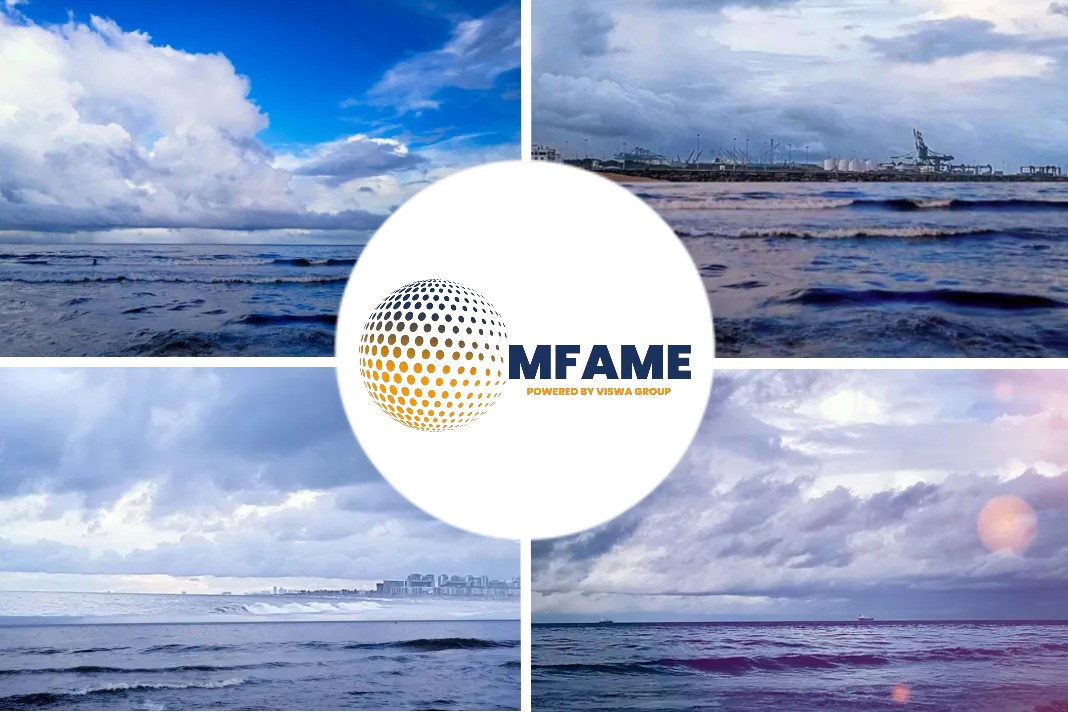
Green shipping looks expensive, but can be competitive, says ABS, states a Loadstar news source.
World’s first methanol/HFO dual fuel container vessel
Maersk recently released a video of the world’s first methanol/HFO dual fuel container vessel in the final stages of construction.
However, the 2,100 teu vessel was seen by some as an unlikely answer to the decarbonisation puzzle, its green methanol fuel, produced from renewable sources, was expected to be too expensive to compete with conventionally powered ships.
However, Maersk is not alone in viewing methanol as a viable alternative fuel, with Stena converting ferry Stena Germanica to operate on the fuel in 2015 and, in 2021, reducing its reliance on diesel further by using ‘Blue Methanol’, recycled from gas by-products of the steel industry.
Recently class society ABS invited journalists to a lecture by its global container lead, Christoph Rasewsky, who explained that green methanol-powered vessels could, with some modifications, compete with conventional ships.
Costs per loaded container per round voyage
He showed how slot costs per loaded container per round voyage could be reduced using technical, operational and design fixes, including air lubrication, bubbles generated on the hull to reduce water friction, waste heat recovery propeller shaft electrical generation and a streamlining wind shield at the bow.
Slow-steaming and adding ships to services could reduce fuel consumption by a further 11.4%; vessel design, wider ships and better stowage could save a further 10.3%; and 5% could be added to vessel efficiency through what Mr Rasewsky called “general optimisation”.
“The methodology I used is basically, a calculation approach that takes into account several cost items which have to be used in order to calculate the slot costs for a containership,” he explained.
Operating a conventionally powered 15,000 teu vessel on an Asia-Europe round-trip, ABS calculates, incurs a per teu cost of $1,046 using low-sulphur diesel. High-sulphur fuel with a scrubber was calculated at $939/teu and LNG at $1,272.
Green methanol at $1,945/teu would be 54% higher than the average of the other three fuels. However, with the modifications suggested, this would reduce to $1,214/teu.
Of course the optimisation package suggested by ABS would also be available to fossil fuelled vessels, which would improve their efficiency too, perhaps widening the gap again.
However, few methanol ships exist, and this type of optimisation is cheaper to include in a new design than through retro-fitting.
Considering any carbon pricing
Moreover, Mr Rasewsky explained that he hadn’t considered carbon pricing, and conceded: “Taking into consideration any (future) carbon pricing, the picture would change. Existing ships would have to pay extra carbon costs, whereas the green methanol-fuelled ship would pay only minor carbon costs.”
Mr Rasewsky also pointed out that green LNG would attract a similar carbon charge to methanol and he went on to say that “all of the green fuels might be quite expensive compared to the fuel price we know nowadays.”
Green LNG describes a gas whose emissions have been offset through other means, planting trees for example, or through technology such as carbon capture and storage, which is in development for the maritime sector.
Carbon pricing in Europe begins on 1 January 2024 and other jurisdictions are expected to follow suit, with the IMO also under pressure to develop a carbon pricing system. The IMO is expected to increase its green targets at its meeting in July, although regulations can take up to two years to be implemented.
Maersk’s methanol-powered feeder ship is due to be delivered this summer.
Did you subscribe to our daily Newsletter?
It’s Free! Click here to Subscribe!
Source: The Loadstar


















